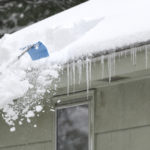Decorating and adding to your front yard can be fun but often comes with a laundry list of items. Fixing your lawn, creating a garden, painting outdoors – the list goes on as to what things you may be thinking about adding to your yard, and they’re all more complicated than they seem.
Luckily, you can add a functional, aesthetically pleasing element to your front yard without too much hassle. Laying down a gravel strip around your home can be achieved in several ways, and the length of it depends on what area of your lawn or house you want it to border.
A gravel strip around your house can serve several practical purposes. We’ll go through the benefits of installing a gravel strip, what purpose it can serve, and the best time of year to lay down gravel.
Why You Might Need a Gravel Strip Around House
There are a few key reasons you might need a gravel strip or gravel bed around your house. One of the most common reasons is to act as a narrow strip of gravel between your lawn and your home or garage. It creates a barrier between the building foundation and the environment.
You can also lay a gravel path between your driveway and the lawn or a garden border or as a gravel pathway in your garden or backyard for decorative purposes.
Benefits
You should consider a gravel strip around your home for several reasons. It can not only serve as a catchment area for rainfall but is also aesthetically pleasing and provides an interesting visual element to your yard.
Control Erosion from Rainwater and Snow
A gravel strip may not seem like all that much, but it can make a huge difference in weather-proofing your home. Gravel around the perimeter of your home can help control erosion by slowing down rainwater and directing it away from your foundation, preventing surface water damage.
It can also be beneficial to protect from snow for the same reason. Snow can be directed away from the house’s foundation by being absorbed by the gravel.
Gravel provides a stable base for vehicles as well, helping to prevent tire ruts in your lawn and landscaping.
Provide a Decorative Border
A gravel strip can be used as a decorative gravel border between your lawn and driveway, adding visual interest to your property. This is where your creative eye can come into play. A gravel strip may seem simple, but there are plenty of opportunities for decoration where you can incorporate it into the style of your home.
The gravel strip can act as a border around a retaining wall, garden bed, or lawn, and the type of gravel or rock laid around can look visually interesting. Add flowers or bushes along the border for added beauty in the front yard, and you can be the talk of the neighborhood.
Gravel Is Cost-Effective
Gravel is a cost-effective and low-maintenance alternative to traditional paving materials like poured concrete. If you’re looking for a DIY option that is easy to do and low-cost, gravel is the way to go.
Gravel is a practical option for homeowners looking to improve their property without breaking the bank.
Types of Rocks for Gravel Strip Around House
Choosing the right type of gravel or rock for your strip is crucial, not just for aesthetics but also for functionality. Here’s a brief overview of some popular options:
- Pea Gravel: These are small, rounded stones that are easy to walk on, making them perfect for pathways. They come in a variety of colors, including white, beige, and gray.
- Crushed Stone: This is a sharper stone that interlocks well due to its angular shape, making it more stable underfoot. It’s commonly used for driveways or areas with high foot traffic.
- River Rock: These are larger, rounded stones that are often used for decorative borders. They can range from the size of a pea to the size of an egg.
- Decomposed Granite: This type offers a more rustic appearance and is often used in Southwestern landscapes. It’s also good for pathways and patios.
- White Marble Chips: As the name suggests, these are bright white and can reflect sunlight, making them a cooler option in the summertime. They’re often used for decorative purposes.
- Lava Rock: This lightweight and porous rock is excellent for areas where water drainage is essential. Its striking red or charcoal color can also be used as a decorative feature.
When selecting the type of gravel, consider the purpose of your gravel strip. If it’s primarily decorative, you can opt for larger, more visually appealing rocks. However, for pathways or driveways, smaller and more compact rocks like pea gravel or crushed stone might be more appropriate. Remember, the beauty of a gravel strip lies in its versatility, allowing you to blend function with aesthetics seamlessly.
How to Install a Gravel Strip Around the House
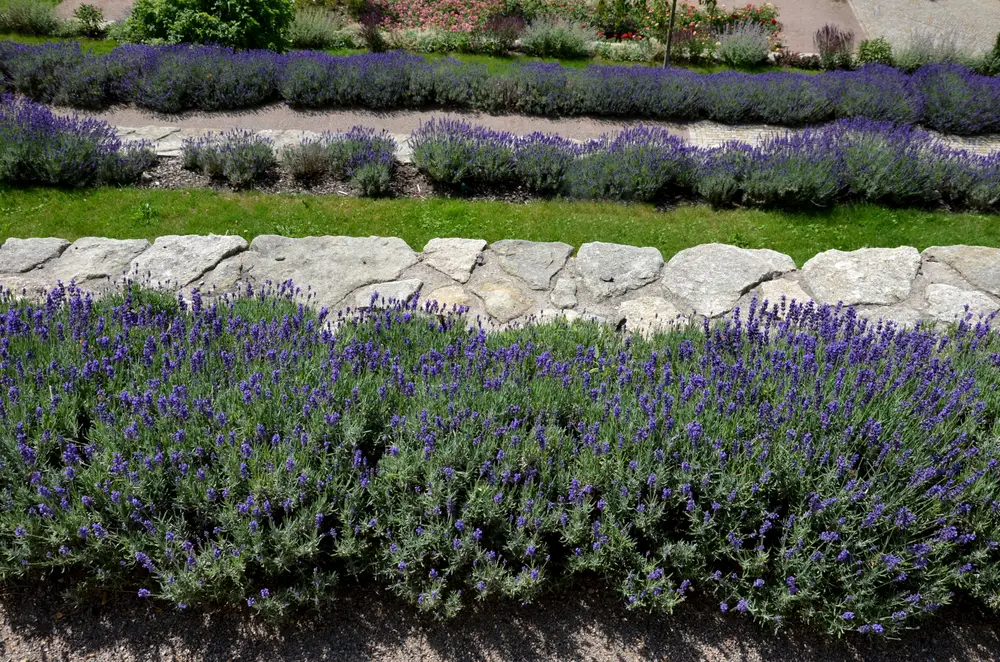
It can take some time to gather the materials needed for a gravel strip, but installation shouldn’t take more than a day or so to complete. Set aside a weekend and get a family member or friend to help, as many hands make for light work.
With these acquired skills, you can take your garden DIY one step further and install an above-ground pond kit. You can do plenty with a free weekend, some good weather, and a few garden tools.
You will need the following materials to install a gravel strip, all of which you can find at your local hardware store:
- Garden spade or shovel
- Steel rake
- Hand tamper
- Crushed stone, gravel
- Wheelbarrow (optional, to carry stone)
To install a gravel strip, mark the area you’re planning on laying down the gravel. You can use spray paint or even a rope to do this, just to give yourself a general outline of where to dig.
Then, dig four to six inches deep into the grass using a spade to create a dirt path. The cleaner you make your path and the neater the lines, the sharper the strip will look when complete.
Smooth out the dirt path with a steel rake to ensure a flat surface. Turn the rake around and use the flat surface to keep the ground level. You can further flatten the soil using a hand tamper, making sure the soil is as compact as possible so gravel is less likely to shift around over time.
Then it’s time to lay down the gravel. Use crushed stone as the base of the gravel strip, covering a few inches of the dirt path. Level out the crushed stone by brushing the steel rake along the path. You can also water the stone with your garden hose to compact the rocks and have them settle into the soil below. Finally, use the hand tamper to flatten it down in place.
When Is the Best Time to Add a Gravel Strip?
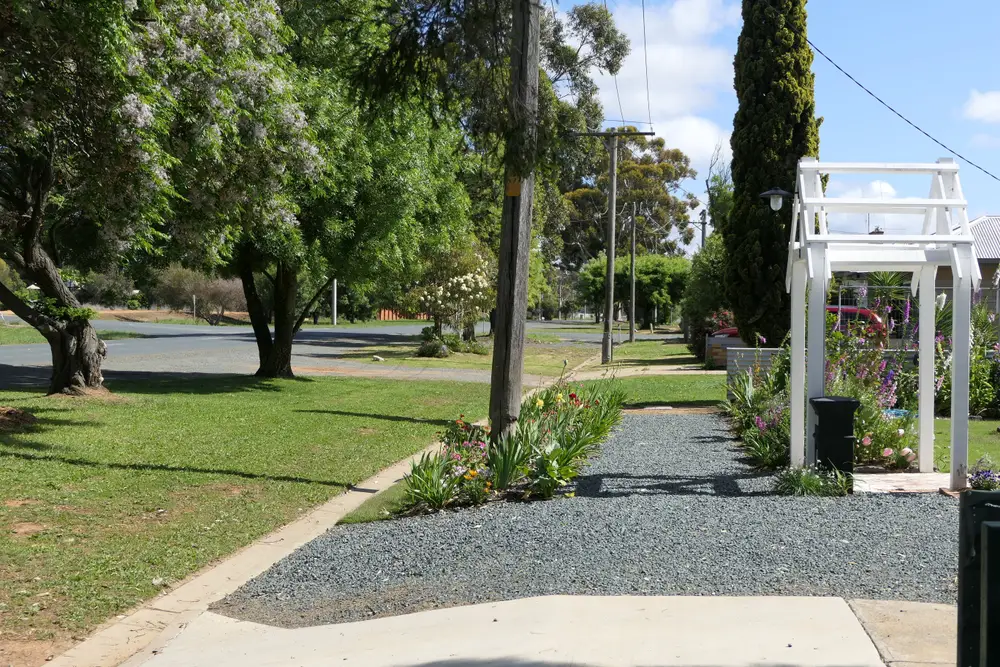
Treat it like any road or concrete installation if you want to add a gravel strip around your home. It’s best to lay down the gravel during summer or fall when minimal rainfall occurs. Any precipitation could shift the pavement and ruin the installation. It’s worth noting to avoid laying down gravel in extreme heat for the same reason.
The best time to add a gravel strip is summer or fall. Then, consider any additional features for your yard, like a water fountain, to continue adding your personal touch around the home.
Gravel Strip Exterior Wall Examples – Photos
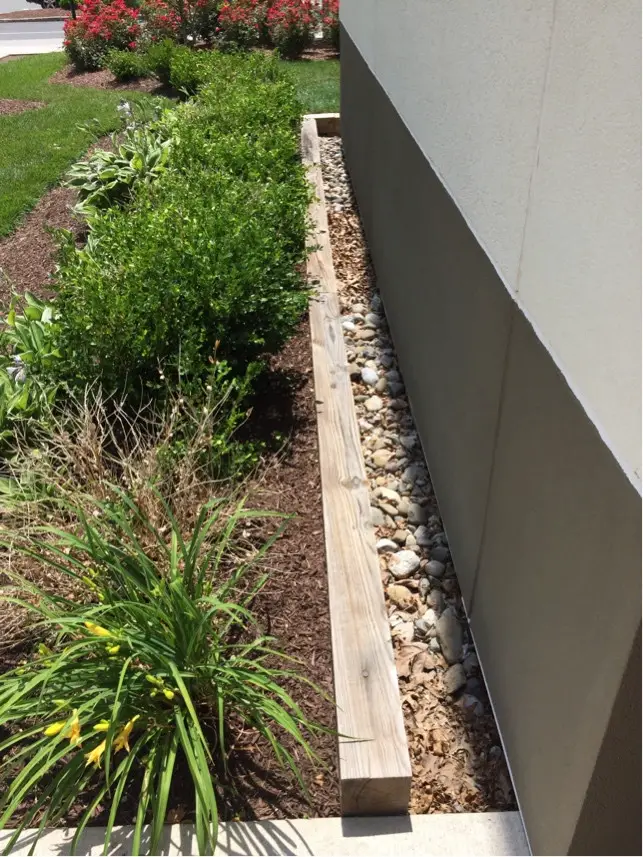
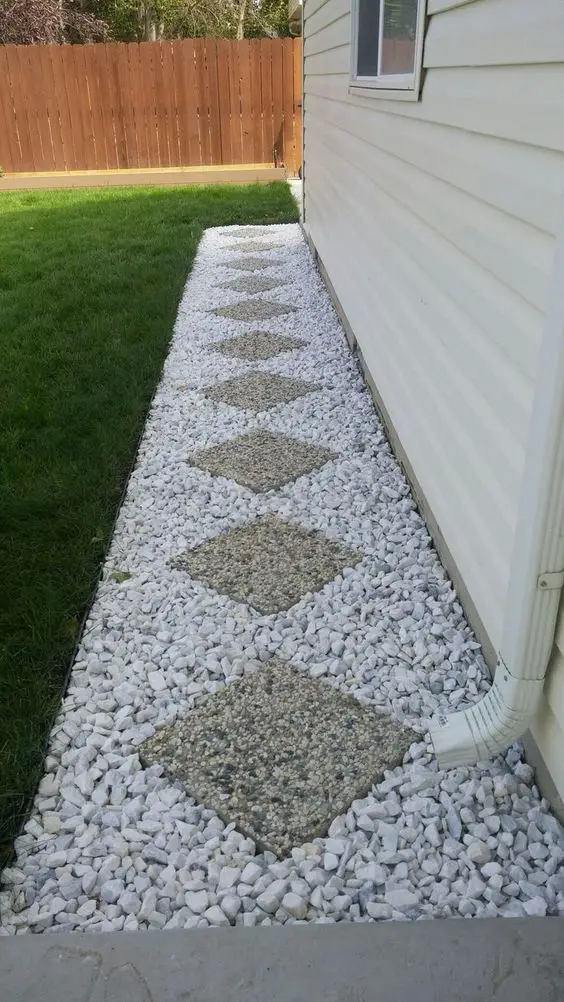
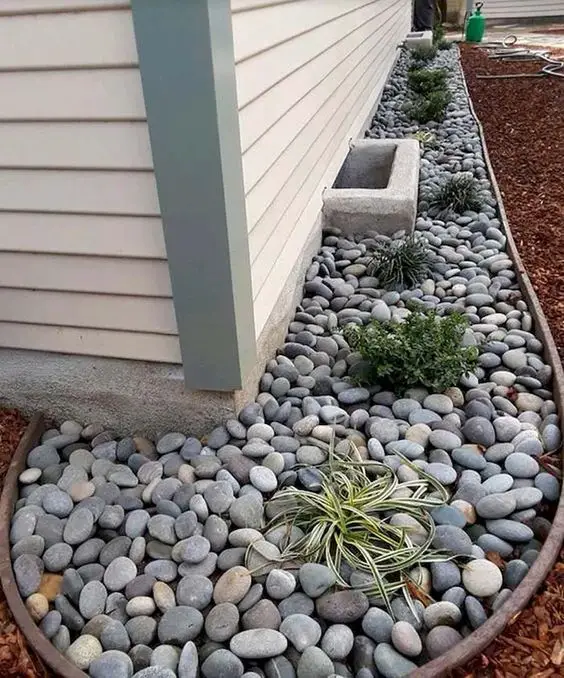
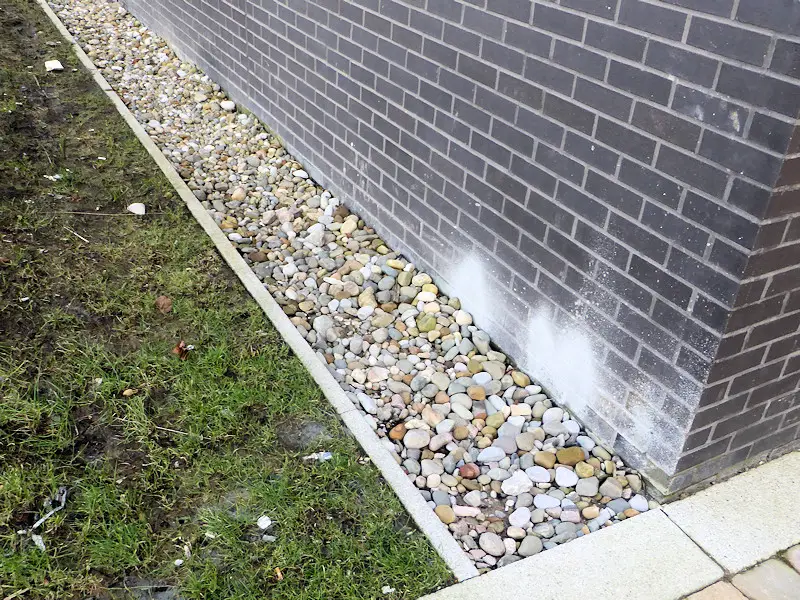
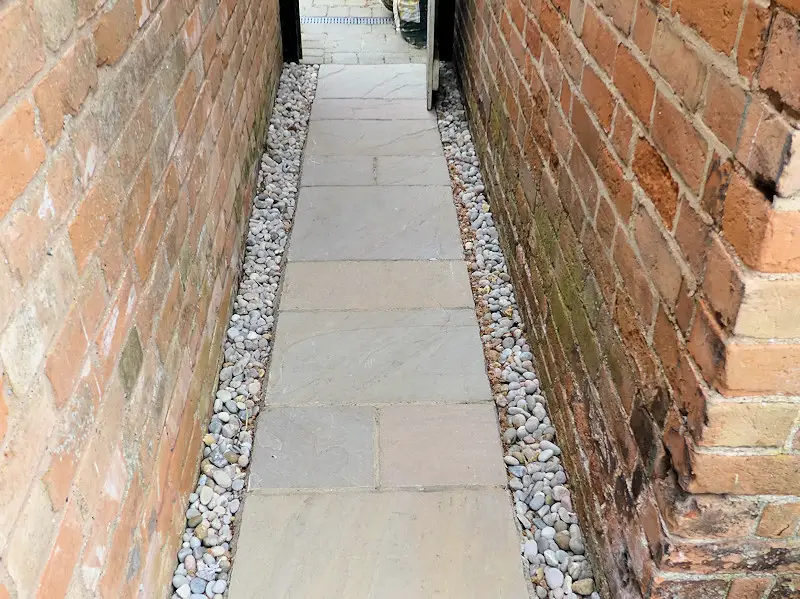
Maintenance and Upkeep of Your Gravel Strip
Regular Raking Over time, gravel can become uneven due to foot traffic or weather conditions. Use a landscape rake or a gravel rake to keep the surface level. This not only ensures an aesthetic appeal but also maintains an even walking surface.
Weed Control To prevent weeds, consider placing a weed barrier fabric beneath the gravel. If weeds do sprout, remove them immediately to prevent further growth or consider applying a natural weed killer solution.
Replenishing Gravel Over time, gravel can thin out or lose its aesthetic appeal. Replenish the gravel every couple of years or as needed to retain its freshness.
Cleaning Occasionally, you may need to clean the gravel. A simple rinse with a garden hose can help remove dust and debris. For deeper cleaning, consider a diluted solution of water and mild detergent.
Eco-friendly Benefits of Using Gravel
Permeability Gravel surfaces allow water to seep through, aiding in groundwater recharge, reducing surface runoff, and preventing soil erosion.
Reduced Heat Island Effect Unlike asphalt or concrete, gravel doesn’t retain as much heat, ensuring a cooler surrounding, beneficial for urban areas.
Locally-sourced Materials Many gravels can be sourced locally, reducing transportation-related carbon emissions.
Comparing Gravel to Other Ground Cover Options
Mulch While mulch can provide a natural look and nourish the soil, it decomposes over time and needs replenishment. Unlike gravel, it may also attract pests.
Pavers These offer a clean and sturdy surface, but they can be more expensive than gravel. They also don’t provide the permeability gravel offers.
Concrete While it’s long-lasting, concrete lacks the natural aesthetic and permeability of gravel and can crack over time.
Grass Requires regular mowing, watering, and maintenance. Gravel, on the other hand, requires minimal upkeep and doesn’t need watering.
Incorporating Lighting and Accessories for Enhanced Appeal
Lighting Incorporate solar garden lights or pathway lights along the gravel strip. This not only enhances aesthetics but also ensures safety during nighttime.
Stepping Stones Intersperse with decorative stepping stones for added visual interest and functionality.
Decorative Edging Use brick, stone, or metal edging to demarcate the gravel area, adding a polished look.
Safety Considerations with Gravel Strips
Slip Hazards Ensure the gravel used isn’t too rounded to prevent slipping, especially in wet conditions. Angular gravels interlock better, providing stable footing.
Size Matters Opt for medium-sized gravel, as it’s less likely to shift underfoot, ensuring safer movement, especially for elderly residents.
Child Safety If you have children, ensure they don’t ingest or insert gravel into their noses or ears. Consider using larger pebbles that aren’t easily picked up by little hands.
Conclusion
While the setup may seem difficult, it can be worthwhile to set up a gravel strip around the house perimeter and area. With the right tools, it can be easier than you think. Not only is it cost-effective, but it can also be a great decorative addition to your home exterior. A well-decorated home that you love can encourage you to get outside more than usual and enjoy the great outdoors.
You can do tons more to your outdoor space beyond laying down new gravel. After setting up your front yard or backyard, consider adding to your household storage, like renovating a shed or garage, or making your outdoor area more usable with a pea gravel patio and a fire pit.



